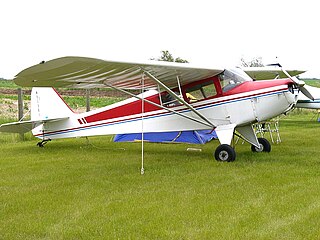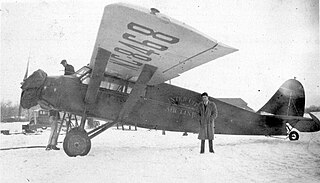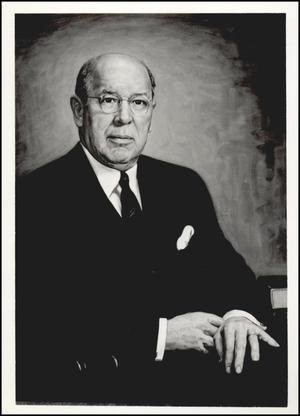
The Bristol Aeroplane Company, originally the British and Colonial Aeroplane Company, was both one of the first and one of the most important British aviation companies, designing and manufacturing both airframes and aircraft engines. Notable aircraft produced by the company include the 'Boxkite', the Bristol Fighter, the Bulldog, the Blenheim, the Beaufighter, and the Britannia, and much of the preliminary work which led to Concorde was carried out by the company. In 1956 its major operations were split into Bristol Aircraft and Bristol Aero Engines. In 1959, Bristol Aircraft merged with several major British aircraft companies to form the British Aircraft Corporation (BAC) and Bristol Aero Engines merged with Armstrong Siddeley to form Bristol Siddeley.

Piaggio Aerospace, formerly Piaggio Aero Industries, is a multinational aerospace manufacturing company headquartered in Villanova d'Albenga, Italy. The company designs, develops, manufactures and maintains aircraft, aero-engines, aerospace components and aerostructures.

Air Tractor Inc. is a United States aircraft manufacturer based in Olney, Texas. Founded in 1978, the company began manufacturing a new agricultural aircraft derived from the S-2B aircraft. Designated Model AT-300 Air Tractor, the new aircraft first flew in 1973. The aircraft was designed to Crop Dust fields faster and easier.

Taylorcraft Aviation is an airplane manufacturer that has been producing aircraft for more than 70 years in several locations.

The Boeing YB-9 was the first all-metal monoplane bomber aircraft designed for the United States Army Air Corps. The YB-9 was a much enlarged twin-engine development of Boeing's single-engine Model 200 Monomail commercial transport.

The RyanNavion is a single-engine, unpressurized, retractable gear, four-seat aircraft originally designed and built by North American Aviation in the 1940s. It was later built by Ryan Aeronautical Company and the Tubular Steel Corporation (TUSCO). The Navion was envisioned as an aircraft that would perfectly match the expected postwar boom in civilian aviation, since it was designed along the general lines of, and by the same company which produced the North American P-51 Mustang.

The Gregor FDB-1 was a Canadian biplane fighter, designed in 1938 by Michael Gregor and manufactured by Canadian Car and Foundry. Despite having some advanced design features such as flush rivetted all-metal construction and a retractable undercarriage, the final generation of biplane fighters was being supplanted by monoplanes and the Gregor FDB-1 was obsolete before it flew. Despite the Royal Canadian Air Force's desperation for modern fighters, the sole example remained unsold and was eventually lost in a fire in 1945. The Gregor FDB-1's model designation stood for Fighter Dive Bomber indicating its intended roles.

The Spartan 7W Executive is a cabin monoplane aircraft that was produced by the Spartan Aircraft Company during the late 1930s and early 1940s. The 7W features an all-metal fuselage, as well as a retractable undercarriage. The 7W Executive was popular with affluent buyers worldwide.

The Waco Aircraft Company (WACO) was an aircraft manufacturer located in Troy, Ohio, United States. Between 1920 and 1947, the company produced a wide range of civilian biplanes.

The Vought XSB3U was an American biplane scout bomber developed by Vought-Sikorsky for the United States Navy during the 1930s. Developed as an alternative to the SB2U Vindicator monoplane, the aircraft proved unsatisfactory to the Navy in comparison, and development was not pursued.

The Stinson Detroiter was a six-seat cabin airliner for passengers or freight designed and built by the Stinson Aircraft Syndicate, later the Stinson Aircraft Corporation. Two distinct designs used the Detroiter name, a biplane and a monoplane.

The Eaglet 31 was a United States two-seat tandem ultra-light high-winged monoplane of the early 1930s. Intended as a low-cost aircraft, its limited production run relegated it to a footnote in aviation history.

The Spartan C3 is an American three-seat open-cockpit utility biplane from the late 1920s.

The Globe Aircraft Corporation was an American aircraft manufacturer formed in 1940 in Fort Worth, Texas. It was declared bankrupt in 1947.
Spartan College of Aeronautics and Technology (Spartan) is a private for-profit aviation college in Tulsa, Oklahoma. It was originally established to provide pilot and technicians for Spartan Aircraft Company but outlived its parent company and continues to train pilots and mechanics into the 21st Century. The main campus is adjacent to Tulsa International Airport, with another campus used for flight training at Richard Lloyd Jones Jr. Airport.

William Grove Skelly was an entrepreneur who made a fortune in the oil business. Born in Erie, Pennsylvania, he moved to Kansas in 1916, then to Tulsa, Oklahoma, in 1919, where he founded Skelly Oil Company. By 1923, his company was one of the strongest independent producers of oil and gasoline in the United States. He helped organize the first International Petroleum Exposition in Tulsa in 1923 and became president of that organization, a position he held for the rest of his life. He was a founder of the Kansas-Oklahoma branch of the United States Oil and Gas Association, then known as Mid-Continent Oil and Gas Association.

The Waco E series is a small family of American-built cabin biplanes built between 1939 and 1942, which differed primarily by engine installation.

The Spartan C2 is a light aircraft produced in the United States in the early 1930s as a low-cost sport machine that would sell during the Great Depression.

The Spartan 8W Zeus was a prototype military aircraft trainer built by Spartan Aircraft Company in the United States in 1937. It was based on the airframe of the Spartan Executive civil aircraft. The sole airframe produced was designated serial number 8W-1 and was registered as NX17612
In aeronautics, bracing comprises additional structural members which stiffen the functional airframe to give it rigidity and strength under load. Bracing may be applied both internally and externally, and may take the form of struts, which act in compression or tension as the need arises, and/or wires, which act only in tension.




















